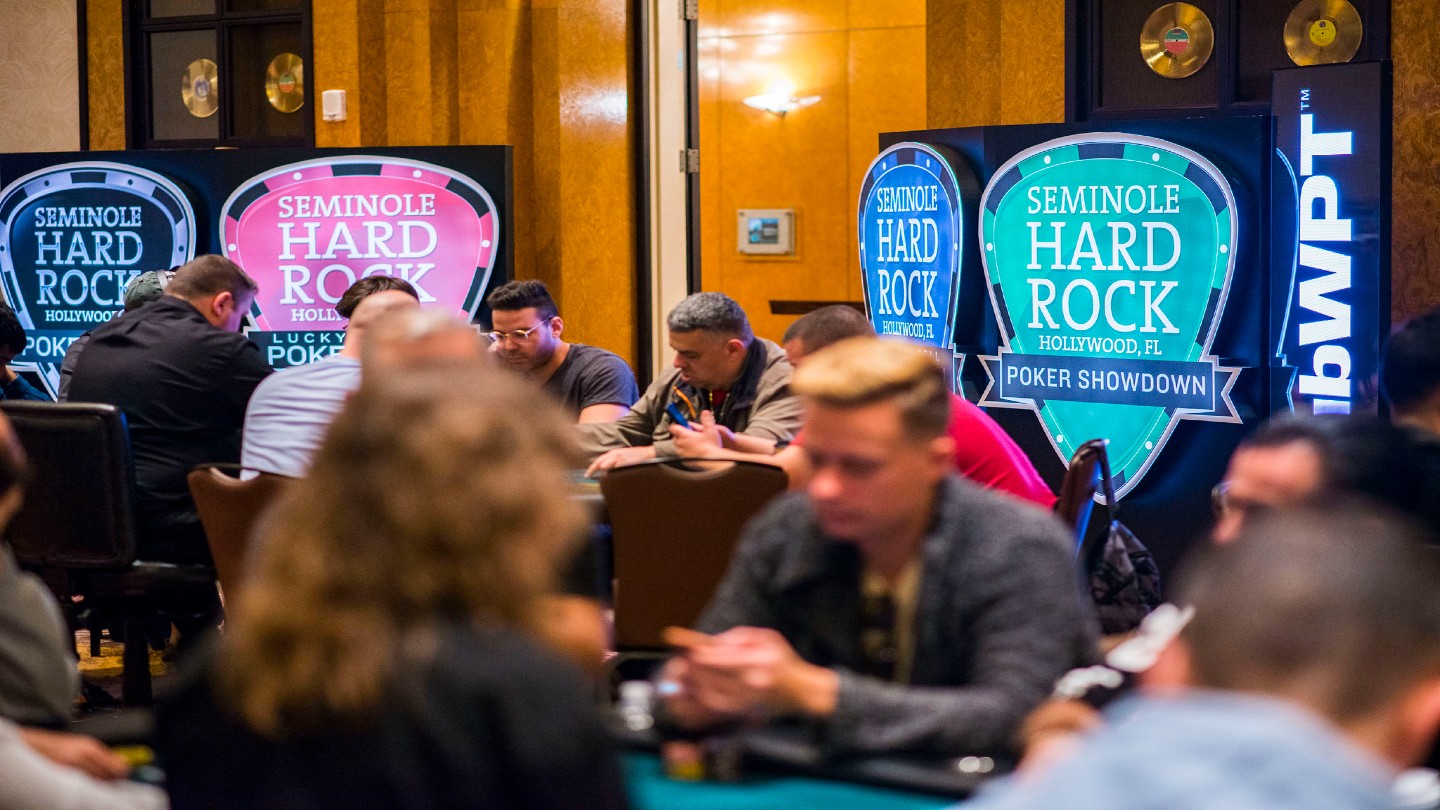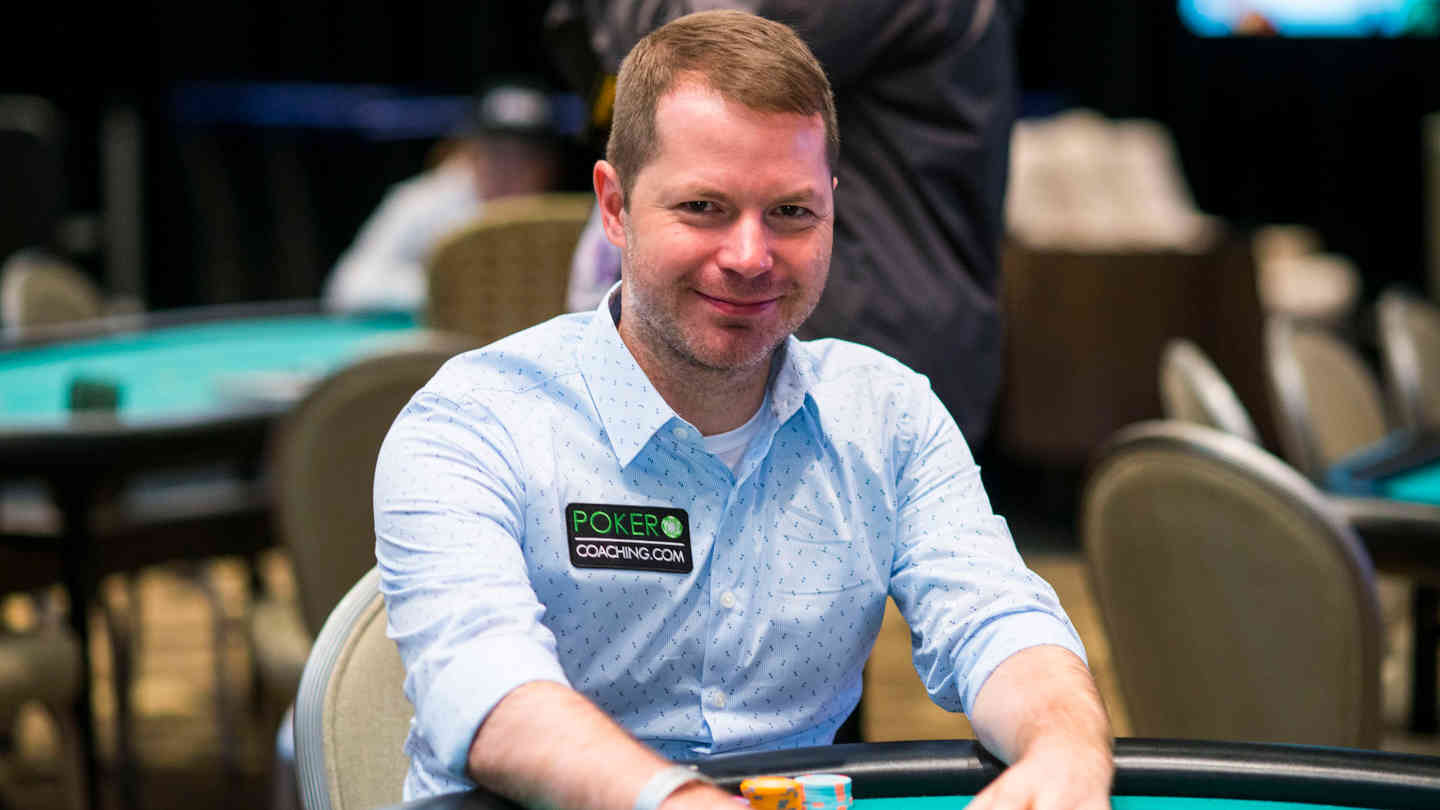Basic Poker Rules: What You Must Know Before Playing in 2024
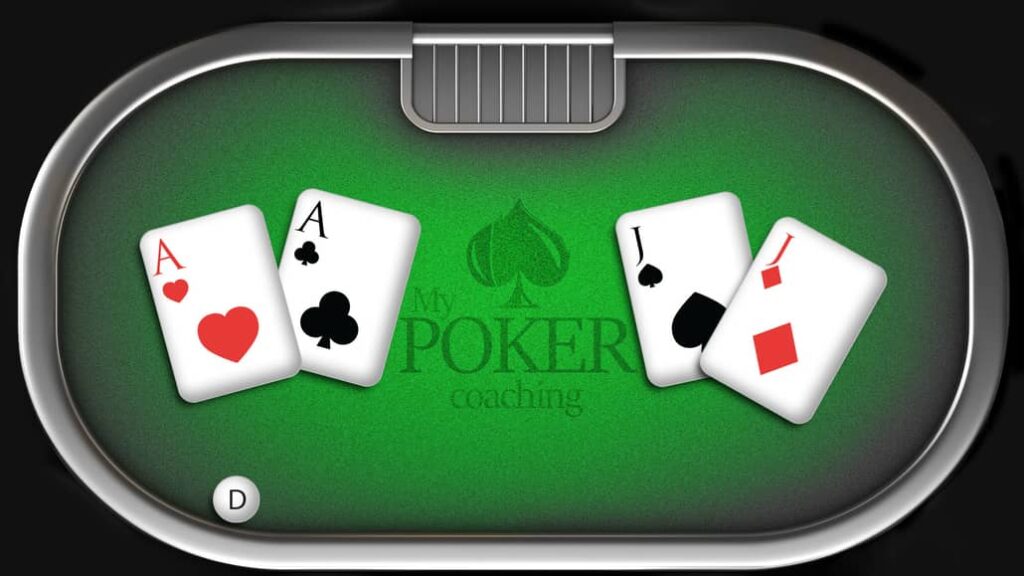
Learning how to play poker is not as difficult as you might think, and this article will surely help you understand the basic poker rules and dynamics of this game. While it might take some time to master all the rules of poker, I am sure you will quickly get a hold of this game and learn how to win.
That being said, poker has many different variations, each requiring a different skill set.
Many players assume they are thinking about Texas Holdem rules when they want to learn how to play poker, but it is actually just one of the many variations of poker.
This article will help you learn the poker rules of all the most popular poker games and be an ultimate guide on how to play poker while focusing on NLH as the most popular game out there.
Before you can play any poker game or learn any more specific rules of poker, you will need to understand poker hand rankings, which are universal in almost all poker variations, so let’s check those out first.
If you want to learn the rules of a specific poker variant, such as Texas Hold’em (most popular) or Pot Limit Omaha, click one of the options below. Otherwise, keep reading to learn the basic rules of poker.
Poker Basics – Learning Hand Rankings
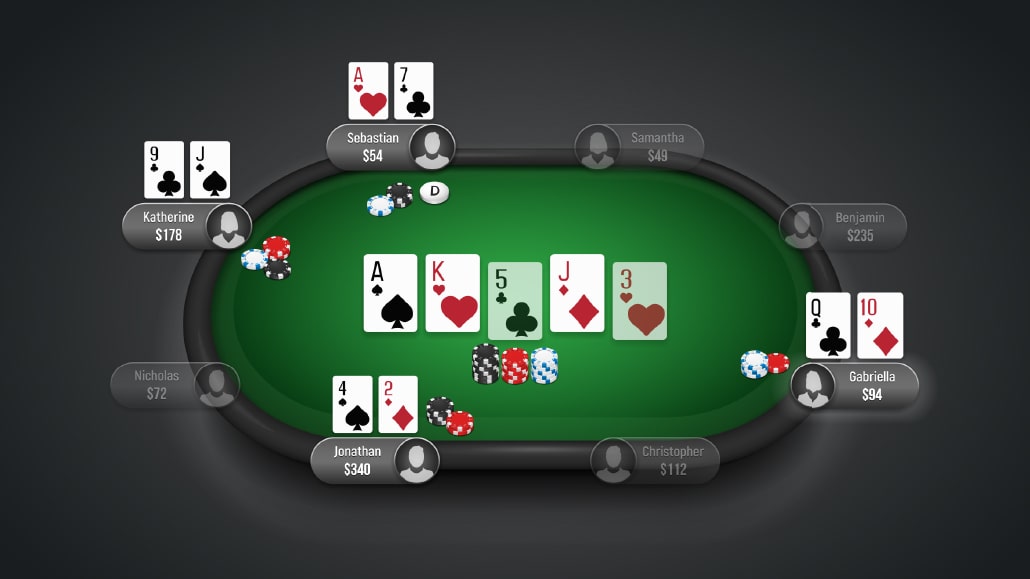
In this section, you will find the list of all possible combinations ranging from the strongest hand – Royal Flush, to the weakest – just a high card.
You can learn everything there is to know in our detailed guide about poker hand rankings, but this is one of the essential parts of Poker Rules, so you should not start a game if you have any doubts about what beats what in poker.
To make things clear and easy, this is a list of the best poker hands in order:
- Royal Flush: Ace, King, Queen, Jack, and a Ten of the same suit – A♣ K♣ Q♣ J♣ T♣
- !– /wp:list-item –>
- Four of a Kind: combination with 4 cards of the same rank, like 8♠ 8♥ 8♦ 8♣ 4♣
- Full House: three cards of the same rank and a pair, like J♥ J♦ J♣ 5♥ 5♣
- Flush: five cards of the same suit that are not in a row, like K♥ Q♥ 8♥ 5♥ 3♥
- Straight: five cards in a row, like 5♥ 6♦ 7♣ 8♣ 9♦
- Three of a Kind: three cards of the same rank plus random two cards, like 9♥ 9♠ 9♣ 6♦ 3♠
- Two Pair: combination with two different pairs, like 4♣ 4♠ 7♣ 7♠ K♣
- One Pair: two cards with the same rank and three random cards, like A♦ A♥ J♣ 7♦ 3♥
- High Card: when all your cars are with different ranks, like K♥ Q♠ 8♣ 3♠ 2♦
If you are unsure if you have a winning hand or why the pot was rewarded to one player instead of another, refer to this part of Poker Rules, and you should have all your questions answered.
That being said, there will be situations where both players have a similar hand, and you still need to declare the winner.
If both players have equal strength hands, then “poker kicker” comes into play, and the extra card of this combination determines the winner. For example, A A J J 5 would lose to A A J J Q since Queen is higher than a 5.
While this might be confusing while learning how to play poker and all of this game's ins and outs, you should quickly get a hold of it since previously mentioned hand rankings can easily determine the winner.
Now that we have covered the basic poker hand rankings let’s take a closer look at the game flow of a poker hand and all the important poker rules from forced bets, card dealing, and the setup of a poker hand in general.
Mastering The Rules Of Poker – The Game Flow

If you want to learn how to play poker, you will first need to understand some basic poker concepts like blinds, antes, and positions at the table, as these are key elements of the game of poker.
Once you are seated at the poker table, you will notice a big dealer button sitting in front of one player, players to their left putting chips in before the cards are even dealt, and the dealer dealing cards to each player at the table.
But what does it all mean? Let’s find out!
Dealer Button in Poker
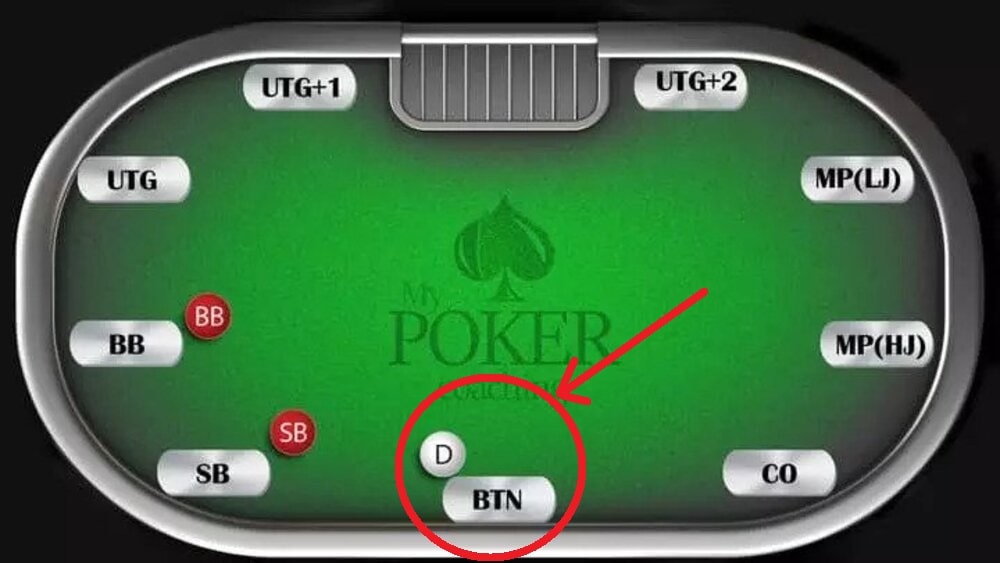
The dealer button is the first thing you will see at any poker table. This button looks like an oversized poker chip, has the word “Dealer” written on it, and doesn’t seem to serve any purpose in the game.
However, the dealer button is an essential part of a poker hand, as it determines who gets the first cards, who post the blinds, and more.
Back in the day, players used to take turns dealing cards, so one player would technically always act as the dealer. This player would start dealing to his left, and deal the last cards to himself.
With this in mind, the player with the dealer button will always be the last to receive cards in a poker game, while the player to their left will be the first.
The player with the dealer button will also be the last to have action on all betting streets after “The Flop, ” making this the most powerful position at the table.
It is worth noting that the dealer button is moved to the next player every hand, so every player gets the button once per round.
Small Blind and Big Blind in Poker
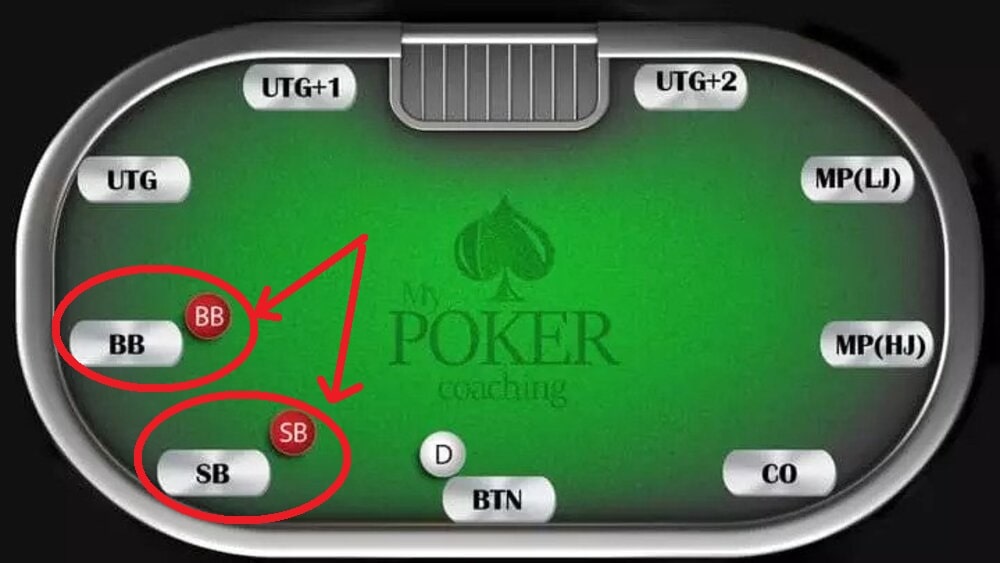
Before a hand of poker is even dealt, the two players sitting to the left of the player with the dealer button must post the “Small Blind” and “Big Blind.”
These forced bets are used in poker games like Texas Hold’em and Pot Limit Omaha to drive the action and kick things off.
For example, in a $200 buy-in NLH cash game, the small blinds would be worth $1, and the big blind would be worth $2.
The two players sitting to the left of the dealer will put this money into the pot before they have any cards, which entices other players to play hands and try to steal the money put into the pot by players with two random cards.
In the first betting round, the blinds are the last players to act, with everyone else getting a chance to raise them and try to take down the money they have put into the pot.
Antes in Poker
Antes are another type of forced bet in poker games and are a big part of games like Seven Card Stud and even tournament No Limit Hold’em.
An ante bet is required of every player at the table and is typically much smaller than the big blind. However, when all players post their ante bet, money is in the pot to play for, and the action can kick off.
Antes serve as a great way to entice players to play more hands and are a critical part of tournament poker rules, as they are introduced to spice up the action in later levels of play.
It is worth noting that the concept of “Big Blind Ante” has been introduced in live poker more recently, whereby the player in the big blind position posts the antes for the entire table to speed up the action.
Positions in Poker
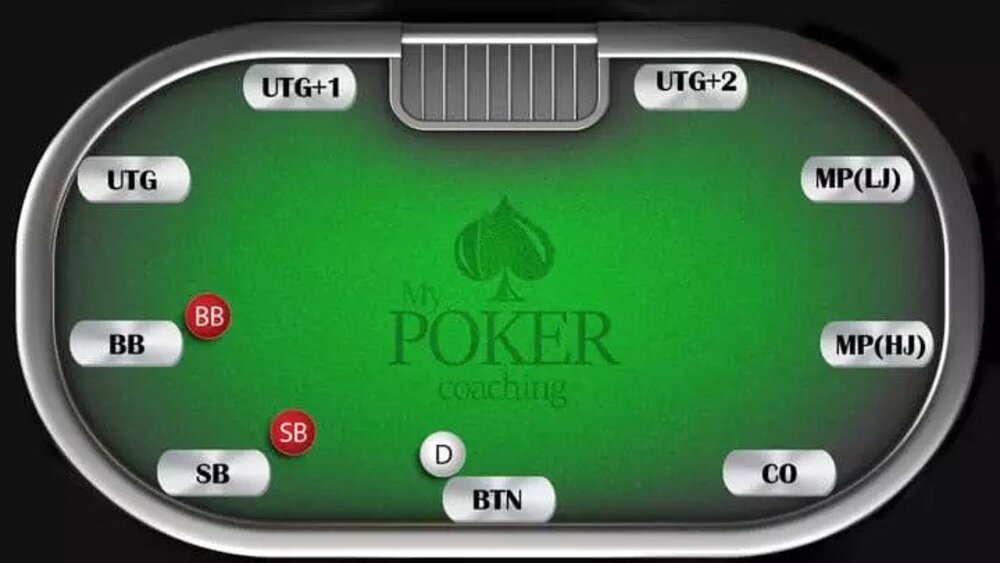
People talking about positions at a poker table refer to the relative seat compared to the dealer button in every hand.
Typically, we split positions in poker into the following:
- Early Position: UTG (Under the Gun) and UTG+1 are the two positions to the left of the blinds.
- Middle Position: MP1 and MP2 are the three positions to the left of early positions, playing before the late position players.
- Late Position: Hijack, Cutoff, and Button are the three positions to the right of the small and big blind, the best positions in a poker hand.
- The Blinds: Two players to the left of the dealer button, small and big blind, are forced to post money into the pot before getting their cards.
Your position at the table compared to the dealer button determines when you act in each betting round, which is critical.
Being in a late position offers many advantages, as you get to act last on every betting round past the first one, and the only players left to act after you in that one are the two players in the blinds, who are at a disadvantage already.
Positional awareness is a big part of any good poker strategy and should be learned early on and always kept in mind.
Dealing the Cards
The button is set, the blinds are posted, and it’s time for the dealer to deal the cards and deal you into your first hand of poker.
At a Texas Hold’em poker table, the player in the small blind will receive the first hole card, with each player to their left getting one subsequently. Once every player has one hole card, the process will repeat, ensuring each player has exactly two hole cards facing down.
Only you can see your hole cards, so you should make sure to always protect them and look at them in a way that ensures no one else can see what you are holding. If you want more detailed instructions, refer to our guide on how to deal Texas Holdem.
Basic Poker Rules – Understanding the Actions
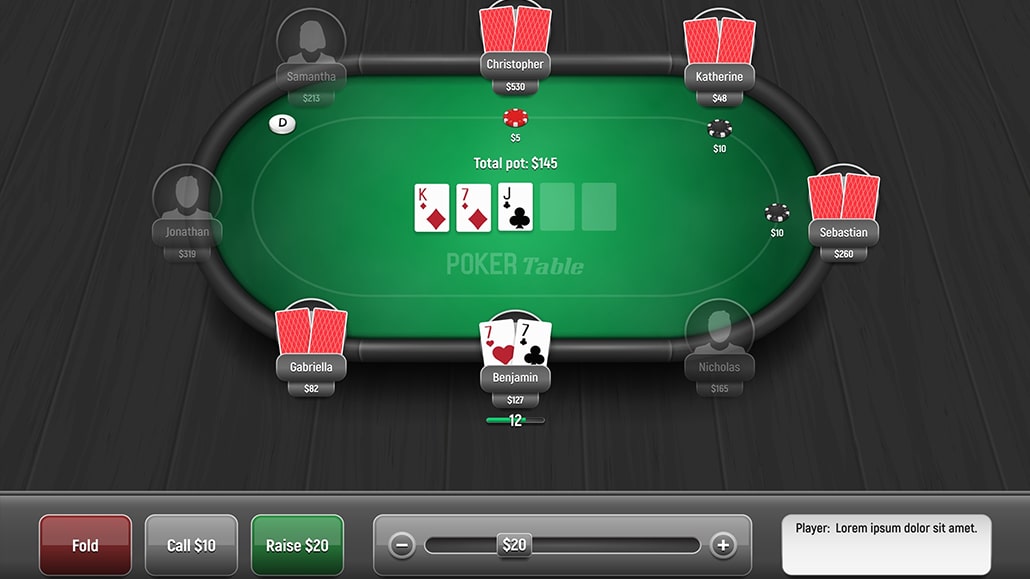
Once all players at the table have their hole cards, the action begins with the first betting round. In total, a hand of Texas Hold’em poker comprises four betting rounds, followed by a showdown.
In each betting round, players take turns around the table and are given an option between several actions they can take.
These actions are:
- Fold: Throw your hole cards away, giving up on the hand and the pot.
- Check: After the flop is dealt, if there is no aggressive action in front of you, you can choose to check your option, giving action to the next player without betting.
- Bet: After the flop is dealt, if there is no aggressive action in front of you, you can make a bet of any size (in no-limit poker) up to the size of your stack.
- Call: Call the current bet by posting the amount of chips required to cover it.
- Raise: If there is already a bet in front of you, you can raise that bet to any amount (in no-limit poker) up to the size of your stack.
- All-In: While moving all-in is technically equivalent to betting or raising, announcing all-in means you are putting all your remaining chips in play and will have no further action until the showdown.
Each poker action plays an important part in how to play poker and is essential to being a successful poker player. Finding the right time to take each action and balancing out these actions is what separates poker champions from the rest of the field.
How To Play Poker – Betting Rounds
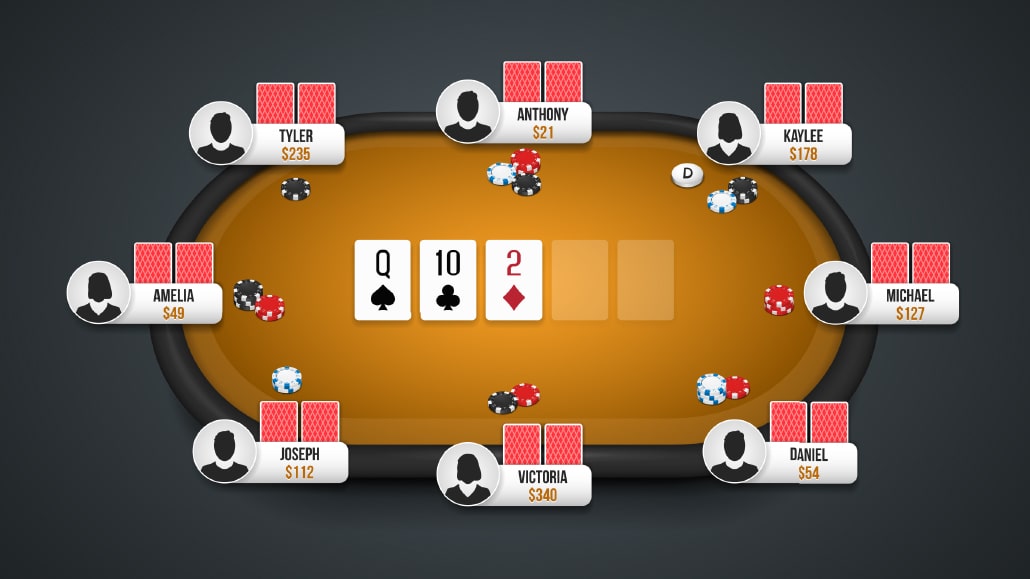
I have briefly discussed the four betting rounds in games like Texas Hold’em and Pot Limit Omaha, but there is much more to be said about each. If you want to learn how to play poker well, keep reading and discover what each betting round entails and how you should act on them.
Preflop – The First Betting Round
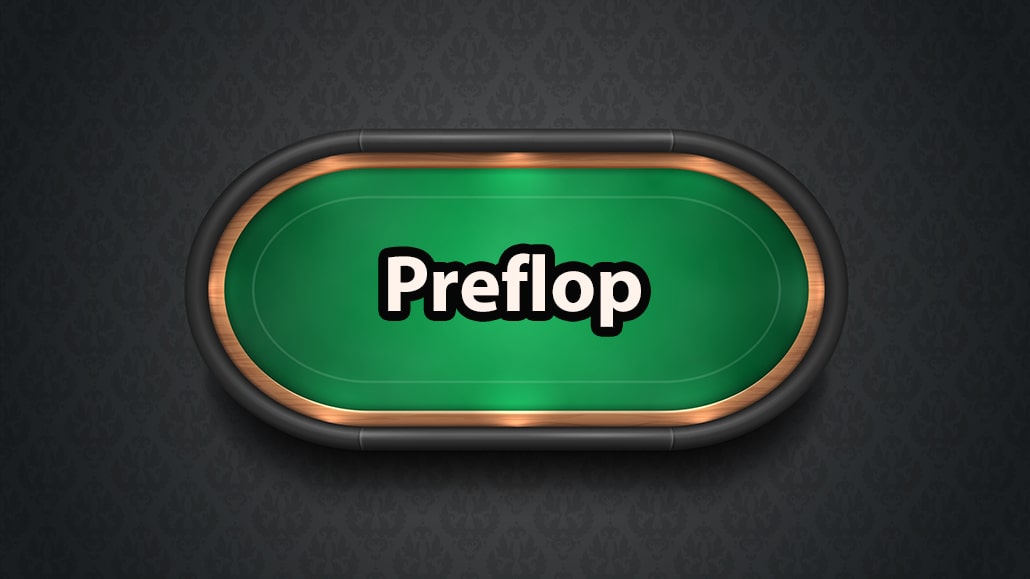
When the Poker hand is dealt, the first betting round begins with the player sitting to the Big Blind's left.
- They can Fold – if his hand is weak and they do not want to play it
- They can Call – match the amount of the big blind or
- They can Raise – increase the bet to the size that they want, in accordance with the game limits
When the first player makes the decision, it is time for one sitting in the immediate left, and all action continues clockwise until everyone makes the decision and matches the bet size or folds.
If a player decides to fold, they can no longer be involved in the hand in any way, and they cannot win the pot.
Other players also have these three options and can decide based on their hand's strength if everyone folds to them.
For example, if the first player calls, the second one raises, and everyone folds to the first player, they can fold, raise, or call and see the flop. When everyone makes their decisions and the bets are matched, you are going to see the flop.
Understanding preflop strategy is one of the first things you need to master if you want to avoid costly mistakes later on, and we prepared a dedicated guide for that, so make sure to grab our free poker cheat sheet.
The Flop – Second Betting Round in Poker
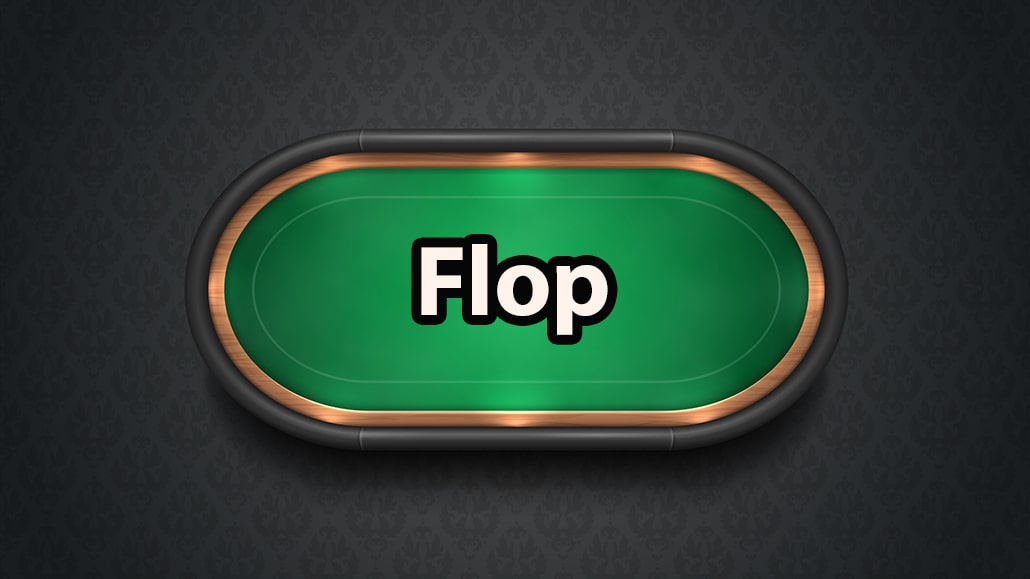
This is where it gets interesting. When the preflop round ends, the first three community cards are dealt on the flop, and everyone can evaluate if it helped improve the hand with their hole cards.
The action starts with the first active player sitting to the dealer's left and continues clockwise like always. Again, all players have to make their decisions and can choose from:
- Betting (placing a bet if no one has done that before them)
- Checking (passing the action to another player can only be done if no one bet before you)
- Calling (matching the amount of the bet another player made)
- Raising (increasing the initial bet by putting more chips in the middle)
- Folding (letting go of your hand if you do not want to play it)
When everyone announces the action and bets are matched, you continue to the third betting round on that poker hand.
The Turn – Third Betting Round
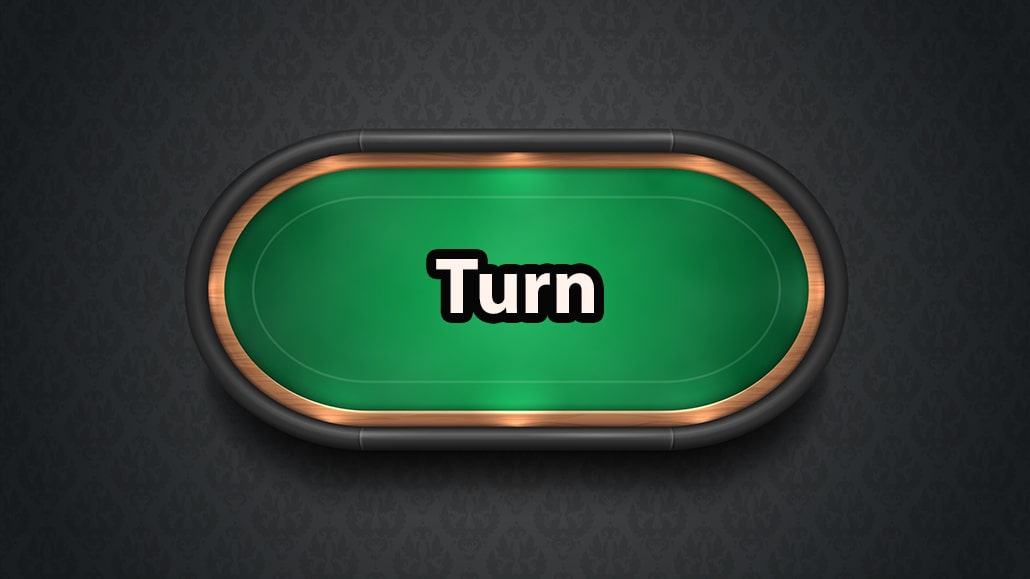
Once everyone has acted and all bets are matched on the flop, you will see the fourth community card, called “The Turn.”
After seeing the fourth community card, the entirely new betting rounds begin, and the action follows in the same way as on the flop.
The River – Forth Betting Round
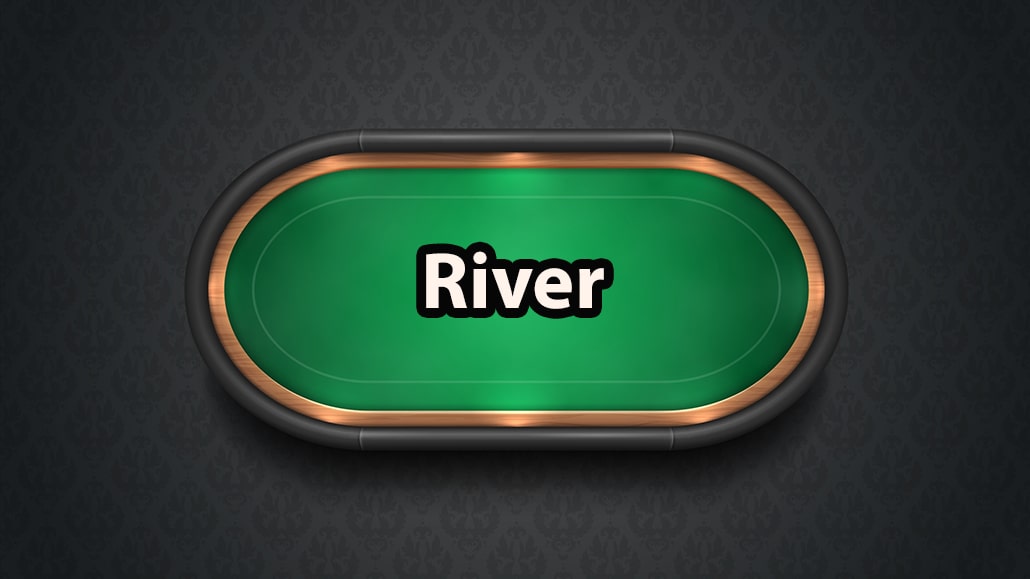
The fifth and last community card in Texas Hold’em poker is called “The River.” The fifth card is placed face-up, and another betting round occurs like on the previous streets.
Depending on your position and other players' actions, you can check, bet, raise, call, or fold again.
A showdown is announced when all the betting action is completed, with players asked to turn over their hole cards. Everyone opens their cards, and the player with the best five-card combination made up of the seven available cards takes down the pot.
If everyone folds before reaching the showdown, the last player standing in the pot takes it down without having to show their cards.
Showdown Poker Rules
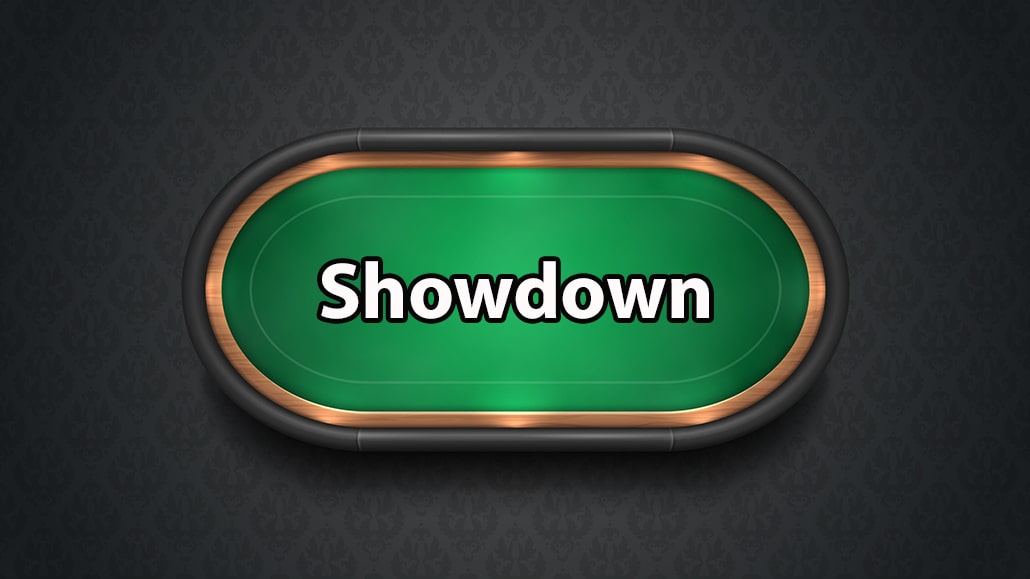
According to official poker rules, the player who made the last aggressive action (bet or raise) has to show their cards first at the showdown.
If you bet on the river and your opponent calls, you must show your hand before your opponent does. If there was no aggressive action on the river, cards are usually turned in order from the dealer’s left to the dealer.
These basic rules of poker are in place to avoid ego battles and unnecessary discussion at the table, making things easier for everyone.
However, if you know you have the best possible hand, you can show it first and avoid a slow roll, which is considered unethical behavior. That being said, do not make the mistake of rushing into things when all cards are tabled at the end.
If you are uncertain who wins or how to proceed further, simply wait for the dealer to announce the hand winner, according to the poker rules.
While all of this happens automatically in online poker games, you do not need to do anything, even in a brick-and-mortar casino. The dealer will take care of it, declare the winner, and push chips to the player taking down the pot.
However, it is worth noting that dealers also make mistakes, so being vigilant and ensuring the dealer got it right can be important too, as I have witnessed more than one scenario in which the dealer declared the wrong winner in significant pots.
Essential Poker Game Rules – Betting Limits

Much of what I have discussed thus far refers to the rules of poker for no-limit poker games, such as No Limit Hold’em, but there are several other types of betting limits in poker.
The rules of poker change significantly between these different betting limits, although many poker games can be played with different betting limits.
Poker betting limits you should be aware of include:
- Fixed Limit Poker: In the fixed limit (FL) poker, all bets must be made according to the preset limits. You can only bet in preset increments on each betting street, with the increment doubling on later streets.
- Pot Limit Poker: In pot limit (PL) poker, you can bet bigger than in FL, but not more than the size of the pot at any given time. The best example of PL poker is Pot Limit Omaha (PLO).
- No Limit Poker: No limit (NL) poker is the most popular form nowadays. In no-limit poker games, you can bet every last chip you have on the table at any given time when it’s your turn to act.
Poker can also be played in a mixed-limit format, where betting is limited before the flop but unlimited once the flop is dealt, but that’s a rare situation.
While No Limit Texas Hold’em and Pot Limit Omaha are the two most popular poker games these days, the best poker players can play many different poker variations in all betting limits.
The only way to participate in mixed game events, such as 8-Game or H.O.R.S.E., is to learn the poker rules of many different games and understand the nuances that come with different betting limits.
Poker Rules Differences for MTTs vs. Cash Games

Typically speaking, poker is played in two main formats, and these are poker tournaments and poker cash games. The basic rules of poker games are the same in tournaments and cash games, but the way players are awarded is significantly different.
Make sure to understand the main differences between the two and decide which one appeals to your more on a personal level.
Poker Rules for Tournaments
A poker tournament is a game where players enter for a pre-determined buy-in fee and receive a fixed amount of chips.
The chips you receive in a poker tournament don’t have any monetary value, cannot be exchanged at the cashier, and only serve to play in the given game.
For example, you may receive 20,000 tournament chips in a tournament with a $150 buyin fee, and all other players will receive the same 20,000 tournament chips.
At the start of the tournament, blinds and antes are set low compared to the starting stack. In our example, starting blinds might be 100/200.
However, as the tournament progresses, it enters different levels. Every new level brings increased blinds and antes, forcing the action and giving players more and more incentive to go after pots.
As the tournament goes on, players end up putting all their money into the pot. Once you lose your chips, you are eliminated from the tournament.
While many tournaments these days allow you to re-enter for the same buyin fee you paid earlier, you will get only one starting stack, while the blinds will already be higher, effectively giving you less action.
All buyin fees in a poker tournament are put together into the tournament prize pool, which is paid out to the top finishers in the event.
For example, the top 10% of 15% of players remaining might get some money in a poker tournament, with the first place getting the biggest rewards and the players at the bottom of the payout table getting 1.5x to 2x their buyin.
Poker Rules for Cash Games
A poker cash game is different than a poker tournament in several ways, although the general rules of poker apply in both.
In a cash game, the blinds are set at the start of the game, and they typically don’t change throughout the duration.
The chips you buy at a cash game table have real monetary value, can be cashed out at any time, and can be used at other cash game tables as well.
You can walk away from a cash game table whenever you want with the chips you have, cash out, or take them to another poker game in the same poker room.
Since cash game chips have real cash value, you don’t have to win all the chips in the room to walk away a big winner, but you rather get to keep any profit you make in real dollar value.
Poker Basics – Understanding Different Types of Poker Games
While Texas Holdem is by far the most popular option, many games have different poker rules variations. To highlight the differences between poker game rules, we break down the most popular poker formats so you can learn how to play each of them.
Texas Hold’em Poker Rules
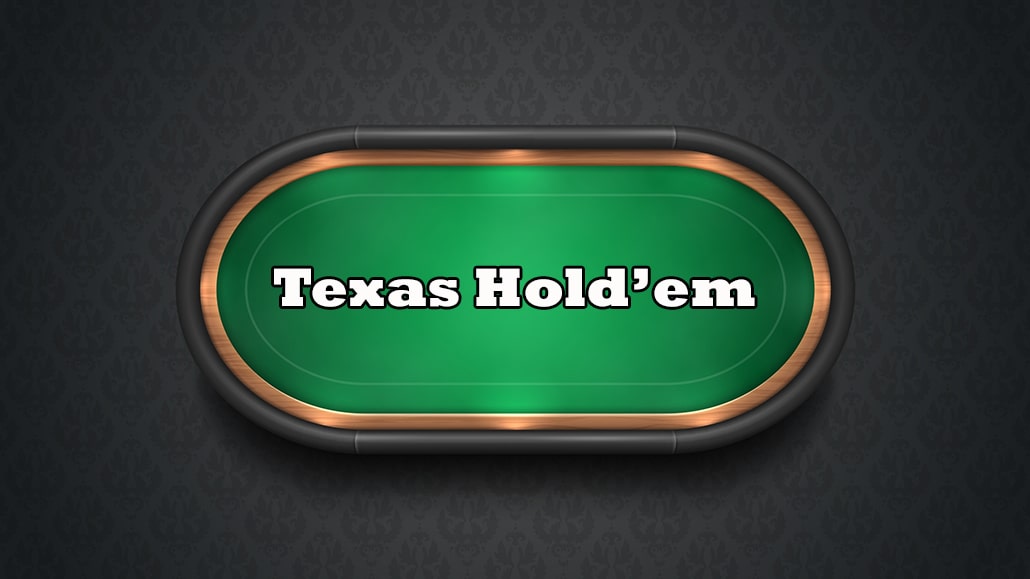
Texas Hold’em poker is easily the most popular variation of poker today, played in casinos around the world and every online poker site in existence.
Texas Hold’em is played with two hole cards and five community cards dealt across the table for all players to use to make the best five-card hand. Texas Hold’em is always played with small and big blind, while antes sometimes come into play as well.
The game is played with four betting streets, with one betting street before the flop, one after the flop, one after the turn, and the final after the river.
Typically speaking, this poker variation is played as no limit, although Limit Hold’em is still popular in the tournament format.
If you are going to learn just one poker game, Texas Hold’em poker should definitely be the one to go with, as this is the game you will find the most action in.
Read more – Texas Hold’em Poker Rules
Pot Limit Omaha Poker Rules
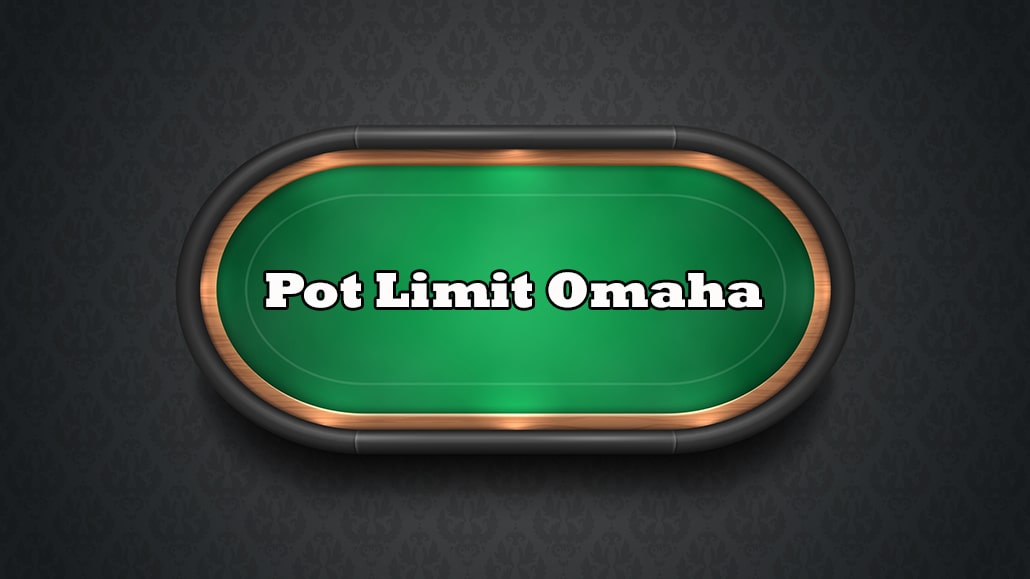
Pot Limit Omaha is a game similar to Texas Hold’em in many ways, as the essential structure of the blinds, antes, and betting streets are all the same.
However, as the name suggests, Omaha poker is usually played in the pot limit format, which means your betting per round will be limited by the pot size.
Additionally, every player in a PLO hand is dealt four cards instead of two but must use exactly two hole cards and three community cards to make a five-card hand.
This means you cannot use more than three cards from the middle of the table to make your hand, nor can you use more than two cards you were originally dealt with.
Pot Limit Omaha is an action-centric game with many big bets, raises, and pots, which typically tends to appeal to recreational players quite a bit.
Read more – PLO Poker Rules
Short Deck Poker Rules
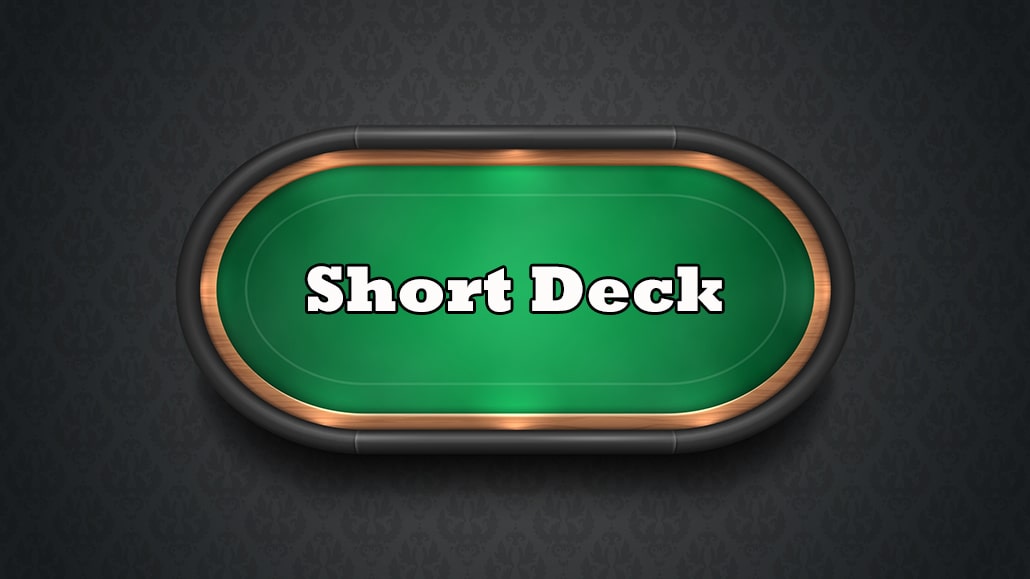
A fairly new variation of Texas Hold’em poker, Short Deck was popularized by the Triton Poker Series, which introduced this game to the general public.
Short Deck is played very similarly to Texas Hold’em but with a few new poker rules added to the mix. For one, there are no deuces, treys, fours, or fives in Short Deck, which means you are much more likely to get dealt a big hand.
Yet, this also means that equities run closer, making hands like straights or two pairs easier, and starting poker hands lose a lot of their value.
In Short Deck, flushes beat full houses because they are harder to make, and any Ace can serve as a low card for the bottom straight.
Read more – Short Deck Poker Rules
Seven Card Stud Poker Rules
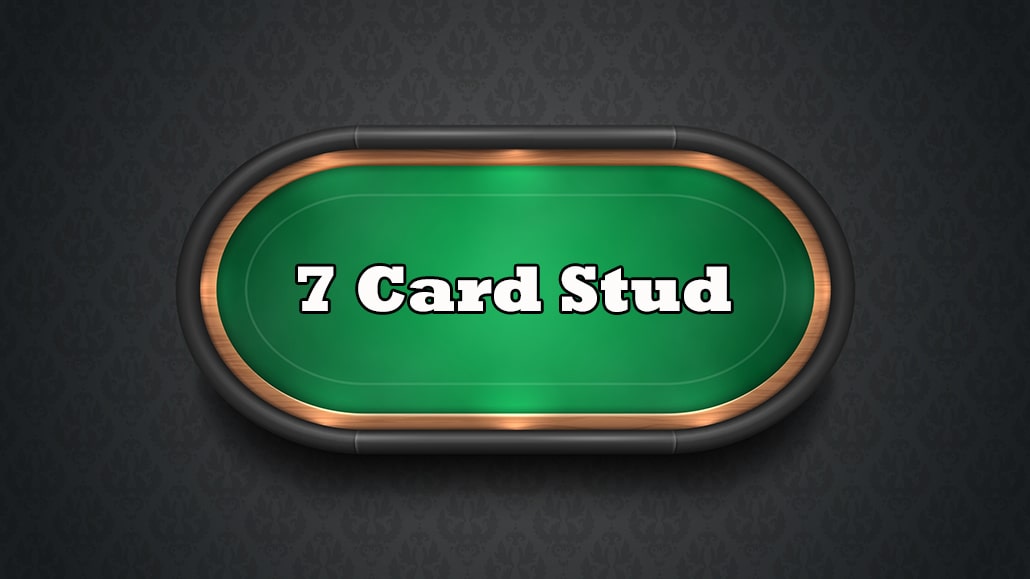
One of the most popular variations of poker before Texas Hold’em had its big break, Seven Card Stud was the favorite game of many poker legends.
In Seven Card Stud, each player is dealt seven individual cards, with the first two and the last dealt face down and the middle four dealt face up, one at a time.
There is a betting round between each new card being dealt, allowing many bets to be put in before players reach the showdown.
Read more – 7 Card Stud Rules
Five Card Stud Poker Rules
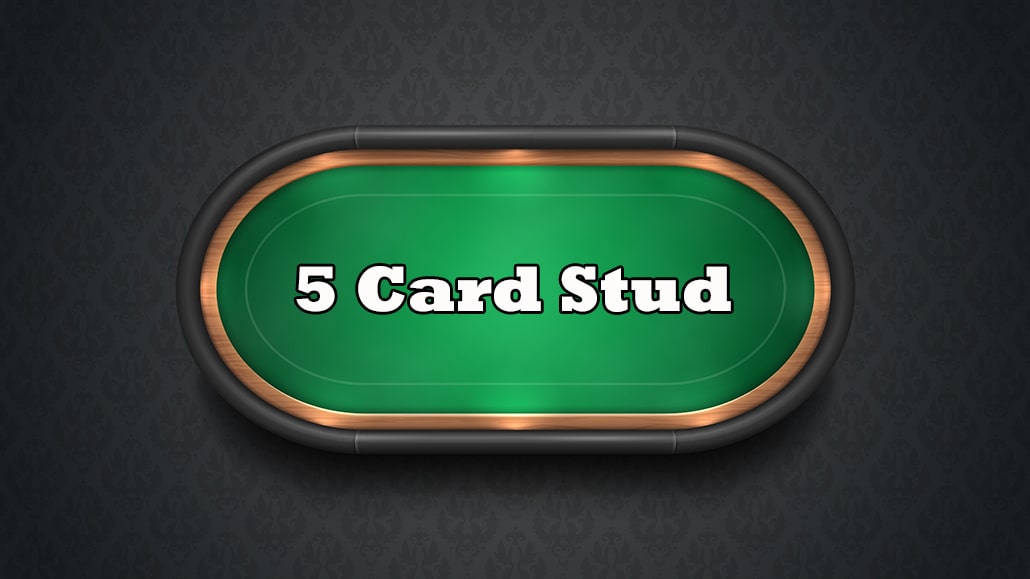
Like Seven Card Stud, Five Card Stud never became quite as popular simply because the lack of additional cards makes the game less interesting.
With fewer betting rounds and fewer opportunities for believable bluffing, Five Card Stud never quite built up the reputation that Seven Card Stud did.
This game used to be relatively popular in the tournament poker circuit but is not played much these days, with even the WSOP not featuring an event in this discipline.
Read more – 5 Card Stud Rules
Razz Poker Rules
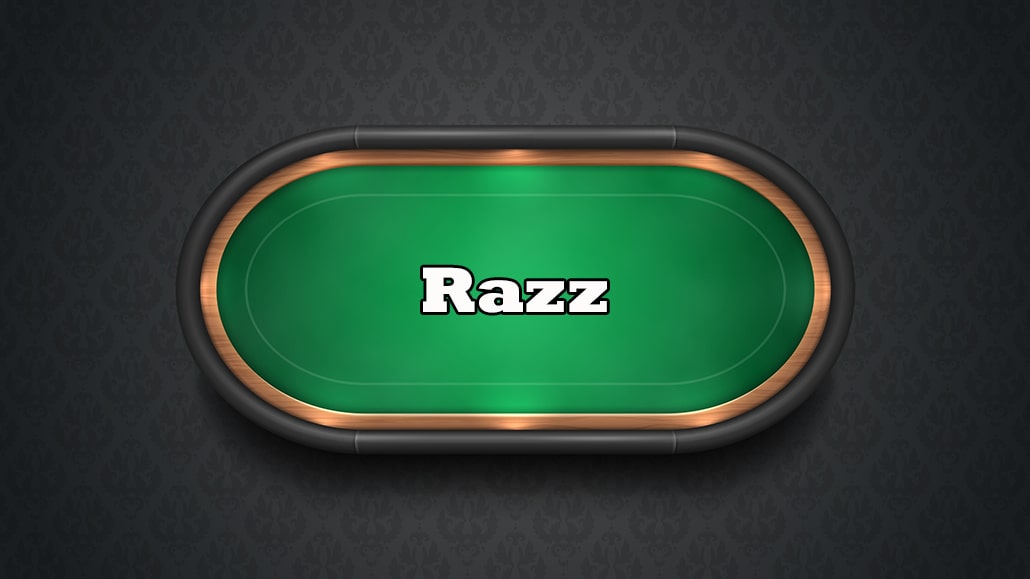
Once you have learned how to play Seven Card Stud, you will also know all the poker rules you need to play Razz. It is the exact same game as Seven Card Stud, except for the fact your ultimate goal is to make the lowest hand possible.
The low straight, also known as “Wheel,” is the best possible hand in Razz, while all other combinations of low cards that don’t make pairs also make for powerful holdings.
You don’t want to see any high cards in your Razz starting hand, but this fact also makes many Razz hands end by fourth or fifth street as one player’s hand becomes obviously superior.
Read more – Razz Poker Rules
2-7 Triple Draw Poker Rules
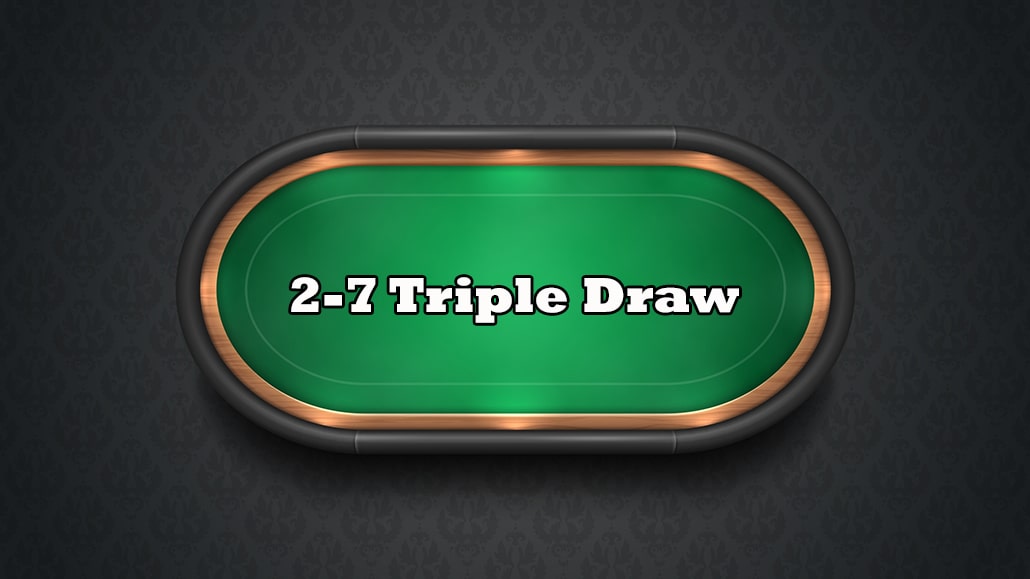
A super exciting draw poker game, 2-7 Triple Draw is another “lowball” game in which your goal is to make a low hand. However, straights don’t count in a 2-7 Triple Draw game, which makes 23457 is the best possible hand in this poker variation.
Unlike in Stud games, you will receive all five of your cards immediately in this version and will get an option to discard unwanted cards up to three times.
2-7 Triple Draw is usually played as a limit game, but a Single Draw version often features the no limit format.
Read more – 2-7 Tripple Draw Poker Rules
Omaha Hi-Lo Poker Rules
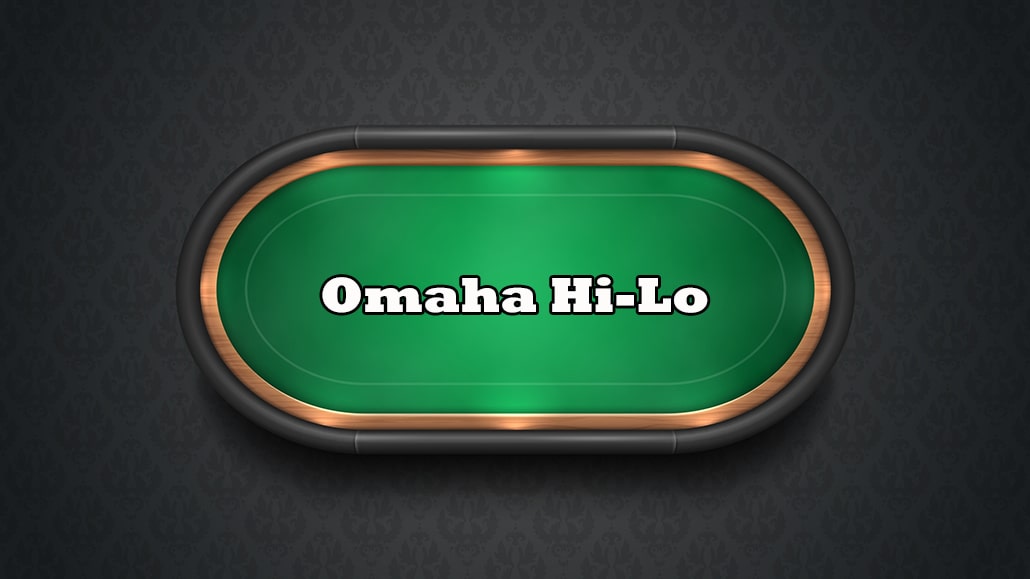
Omaha players absolutely love this Hi-Lo game, or Omaha8 as they like to call it, as the game adds some interesting poker rules to think about.
In Omaha Hi-Lo, your goal is to make a strong poker hand while also making a low hand to go with it, as the best low hand gets to win half the pot.
However, only cards eight and below count for the low, which means you won’t be able to make a low on every Omaha Hi-Lo board.
These added rules of poker make Omaha Hi-Lo a game where you must choose your starting hands carefully and play every betting street with a lot of caution.
5 Card Draw Poker Rules
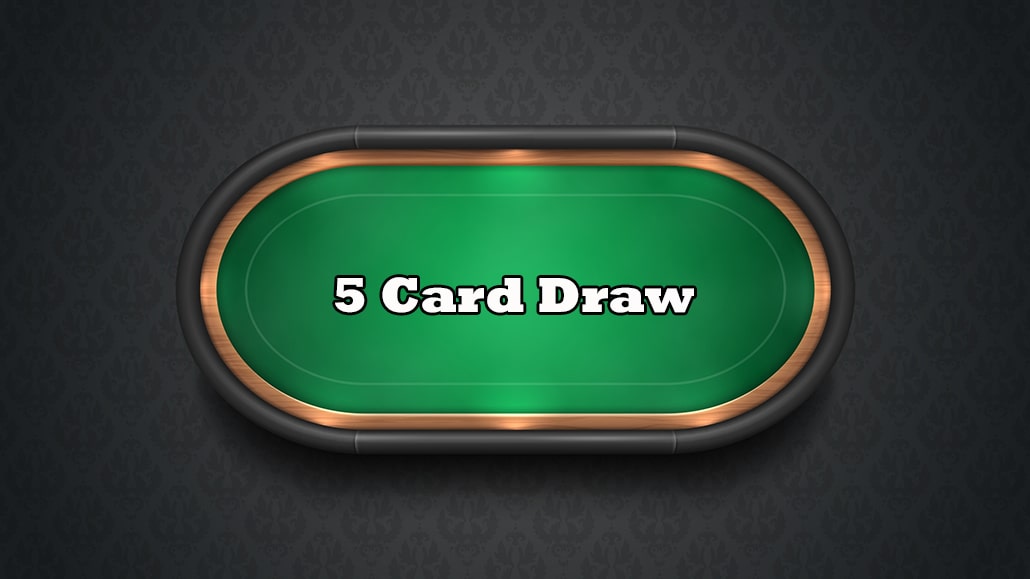
Five Card Draw poker is played with each player dealt five cards, a single drawing round allowing them to discard as many cards as they want and get replacements, and two betting rounds in total.
This game is usually played as no limit, as there are only two betting rounds to consider, which encourages big bets.
Five Card Draw is the first poker game that many players learn, as its simple poker rules make it easy to learn and fun to play.
Read more – 5 Card Draw Rules
Summary Of Basic Poker Rules
Now you know how to play poker on a basic level and understand the game's flow, so all you have to do is put some hours into practice and learn as you go.
If you are not sure how any of the poker games are played or want to dive into advanced strategies, you should check the best poker training sites to speed up your progress.
Poker Rules FAQs
ONLINE POKER:
RESOURCES:






